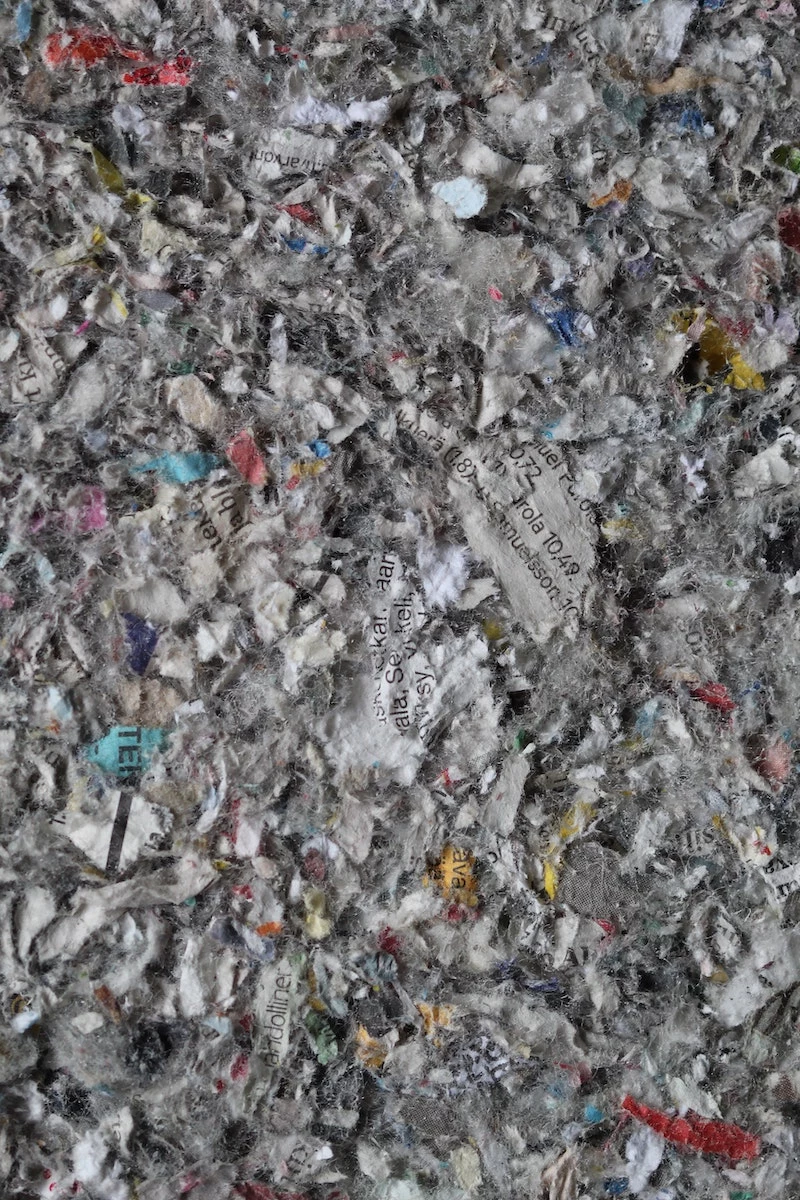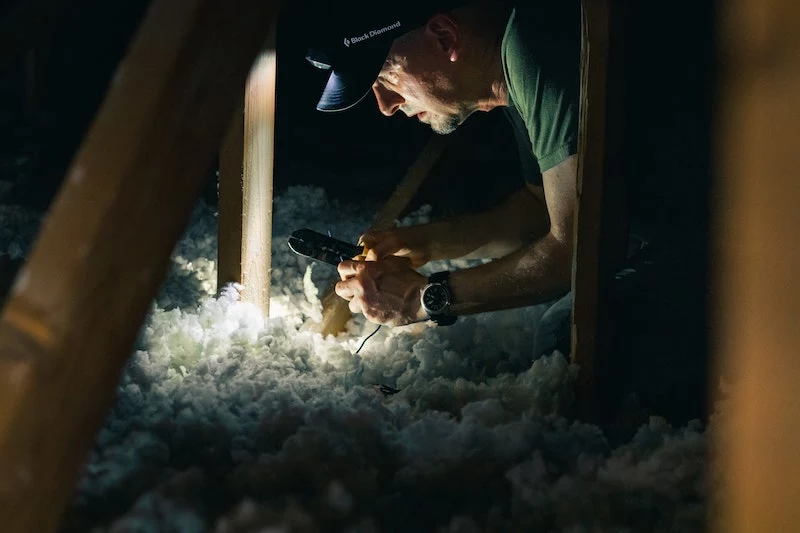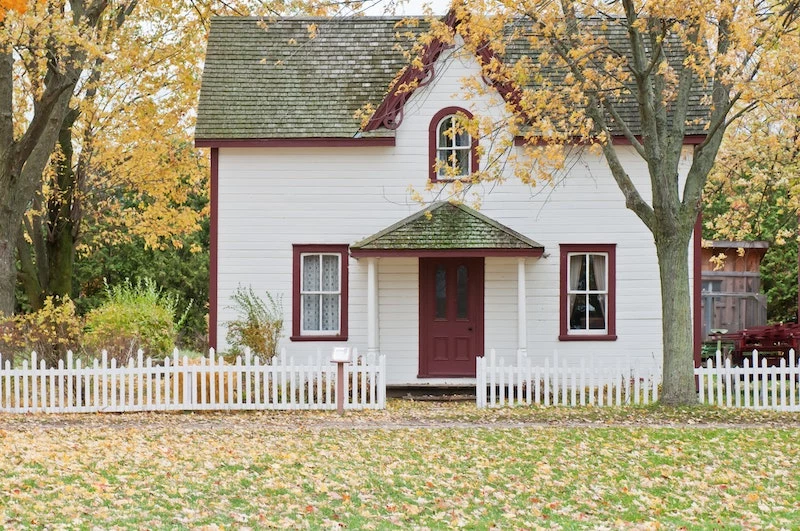What’s That Fluffy Stuff in Your Attic? A Real-World Guide to Old Insulation
I’ve been in thousands of attics over the years, and the phone call that sends me there is almost always the same. A homeowner, maybe in the middle of a weekend project, pokes their head into the attic and finds… something weird. It’s usually some kind of loose, fluffy stuff, and they want to know if it’s safe. Honestly, they’re usually looking at one of two things: old cellulose or, more seriously, insulation that contains asbestos. Knowing the difference isn’t just trivia—it’s a critical step in keeping your family safe and your home’s value intact.
Sure, you can find guides online with a couple of pictures, but that’s not the whole story. In the real world, insulation gets old, dusty, and sometimes mixed together. Telling them apart takes more than a quick glance; it’s about understanding what these materials are and why they were used. My goal here is to share what I’ve learned from being in the trenches, so you can make a smart, safe decision about what’s lurking above your ceiling.

Why Insulation Works (and Why One Type is So Risky)
First off, let’s talk about what insulation even does. Its one job is to slow down heat transfer by trapping air in tiny pockets. Both asbestos-containing materials and cellulose are great at this, but they come from completely different worlds in terms of safety.
Asbestos: The Infamous Mineral Fiber
Asbestos isn’t a single material, but a group of natural minerals made of long, thin, incredibly durable fibers. For a long time, it was hailed as a miracle product because it’s so resistant to heat and fire. When used in insulation, those tiny, sharp fibers create a super-effective web for trapping air.
The problem is, that same structure is what makes it so dangerous. When disturbed, asbestos materials release microscopic fibers that are so light they can hang in the air for days. If you breathe them in, they can get lodged deep in your lungs forever. Your body just can’t break them down. Over time, this can lead to horrible diseases like asbestosis, lung cancer, and mesothelioma. Heads up: there is no known safe level of asbestos exposure. Every major health organization agrees on this.

Cellulose: The Smart, Recycled Alternative
Cellulose is a whole different beast. It’s mostly made from recycled paper products, like old newspapers, which are shredded into a fluffy material that also traps air really well. Of course, plain paper is a fire hazard. To fix this, manufacturers treat it with borates (like boric acid).
This borate treatment is the secret sauce. When it gets hot, the borates release water molecules, which dramatically slows the spread of fire and gives cellulose a top-tier Class 1 fire safety rating. As a bonus, borates are also a natural pest and mold deterrent. Bugs and mice hate the stuff and won’t make a home in it. It’s a pretty clever, multi-purpose solution.
A Quick Word on Vermiculite…
Now, this is where most people get confused. You might have something that looks like little pebbles. That’s likely vermiculite. By itself, vermiculite is just a natural mineral that puffs up when heated, making it a decent insulator. For decades, a huge portion of the world’s vermiculite came from a single mine that was, unfortunately, contaminated with asbestos. This product was often sold under the brand name Zonolite.

Because of this, the official advice is simple: if you have vermiculite insulation, you have to assume it contains asbestos until proven otherwise by a lab test. The danger isn’t the shiny pebble itself, but the asbestos mixed in with it.
How to Tell What You’re Looking At (The Field Guide)
Before you even think about poking your head into that attic, let’s talk gear. The dust in old attics is no joke, regardless of what’s up there. I never go in without proper protection, and neither should you.
Your Safe-Peek Shopping List:
- A P100 Respirator: Not a flimsy dust mask. A real P100 respirator will cost you around $30 at a hardware store and is essential.
- Disposable Coveralls: You don’t want to track that dust back into your house. A pair costs about $15.
- Safety Glasses: To keep dust out of your eyes. A simple pair is just a few bucks.
Okay, geared up? Here’s a quick visual cheat sheet to help you identify what you’re seeing.

Clues You Might Have Asbestos-Containing Vermiculite:
- Appearance: This is the easiest to spot because it doesn’t look like fiber. It’s made of small, pebbly particles that are usually gray-brown or have a silvery-gold tint.
- The Shimmer Test: Here’s the big giveaway. Shine a flashlight on it. Does it glitter or shimmer? That’s a classic sign of vermiculite, thanks to its mica content.
- Texture: It’s very lightweight and will pour like rocky sand if you were to scoop it. It has a distinct, light crunching sound when disturbed.
By the way, you might also find asbestos as a white, chalky wrap around old heating pipes or as stiff, white blocks around an old furnace. This stuff is incredibly fragile and should be left completely alone.
Clues You Probably Have Cellulose:
- Appearance: Most cellulose is a uniform gray color and looks like finely shredded newspaper or a big clump of dryer lint. If you look really close, you can sometimes spot tiny flecks of colored print from the original paper.
- The Shimmer Test: It is completely matte. Shine a light on it, and you’ll see zero shimmer or glitter.
- Texture: It’s soft, light, and almost dusty. It clumps together rather than pouring. It feels cool to the touch.

So, What Do You Do Next?
Alright, you’ve taken a look and you have a hunch. Here’s the safe way to handle the situation.
If You Suspect Asbestos (like that shimmery vermiculite):
1. STOP. Do not disturb it. This is the number one rule. Don’t sweep it, don’t store boxes on it, don’t touch it. Seal the attic hatch with plastic and tape if you can, and limit access to the area.
2. A CRITICAL WARNING: Never, ever use a regular shop vac or your home vacuum on this stuff. It will not capture the microscopic fibers. Instead, it will act like a super-spreader, blowing the asbestos all over your house. Seriously. Don’t do it.
3. Don’t just cover it up! I’ve seen people think they can just bury the problem by dumping new insulation on top. This is a terrible idea. It doesn’t contain the asbestos, makes future removal a costly nightmare, and you’d still have to disclose it when you sell the house.
4. Call a Pro for Testing. This is not a DIY job. Search online for a “state-certified asbestos inspector.” They know how to take a sample safely. The test itself usually costs between $100 and $300 and is the only way to know for sure. It’s money well spent for peace of mind.
5. Prepare for the Cost. If the test is positive, professional abatement isn’t cheap. Depending on the size of your attic and local rules, removal can run anywhere from $5 to $15 per square foot. For a typical attic, this often adds up to a total of $5,000 to $15,000. It’s a huge job because professionals have to set up full containment with negative air pressure to do it safely.
If You Have Cellulose:
Good news! This is much simpler and safer. The main concern with old cellulose isn’t toxicity, but performance.
- Check for Moisture: Cellulose is like a sponge. If you’ve had a roof leak, it can get waterlogged, which ruins its insulating value and can lead to mold and rot. If you see clumpy, stained, or damp spots, you need to fix the leak first.
- Check for Settling: Over the years, loose-fill cellulose settles and gets compacted, which lowers its R-value (its ability to insulate). You might notice it has shrunk down several inches. You’ll likely need to add more to get it back up to modern standards. You can do this yourself by renting a blower from a big-box store and buying bags of cellulose, or you can hire a pro who will use a technique called dense-packing to ensure it doesn’t settle again. For a DIY top-up, you’re looking at a few hundred dollars in materials; a professional job might cost $1,000 to $2,000, but the performance is usually much better.
At the end of the day, knowing what you’re dealing with is half the battle. Take a safe peek, make an educated guess, and then call in the right person for the job if needed. Your lungs—and your wallet—will thank you.










